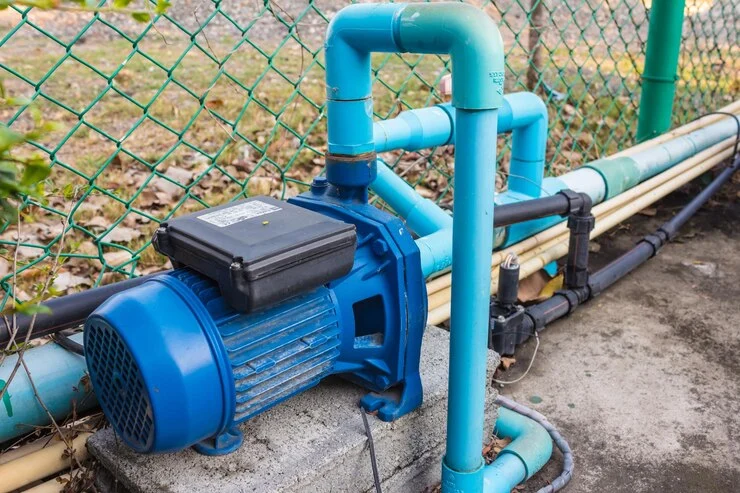In the ever-evolving world of wastewater management, drainage pumps play a critical role in ensuring the efficient and effective removal of unwanted water from various settings. These versatile pumps address diverse applications, including basement sumps, sewage systems, and landscape drainage, catering to the needs of residential, commercial, and industrial properties alike. Selecting the right drainage pump for your application is essential, as it ensures optimal performance, lower energy consumption, and minimal maintenance requirements.
When it comes to selecting the ideal drainage pump, there are numerous factors to consider, including the type of wastewater being handled, the desired flow rate, and the vertical and horizontal distance the water must be pumped. Understanding these key factors enables you to make an informed decision and helps ensure that your chosen pump continues to provide reliable and efficient performance over time.
In this comprehensive guide, we aim to demystify the process of selecting the perfect drainage pump for your specific needs by providing essential insights into the various pump types, their functionalities, and the crucial factors to consider during the selection process. Whether you are a homeowner seeking to address basement flooding, a facility manager needing to upgrade your sewage system, or an industrial plant operator looking to enhance your wastewater management processes, we have the knowledge and expertise to help guide you towards the ideal drainage pump solution.
Types of Drainage Pumps: Which One Is Right for You?
1. Submersible Pumps
Submersible pumps are specifically designed to operate while fully submerged in water. Equipped with tight, waterproof enclosures, these pumps are suitable for handling wastewater containing slurry, sewage or solids. Their versatile design makes them an ideal choice for residential sump pump systems, commercial sewage systems, and even industrial applications.
2. Sewage Pumps
Designed for pumping raw sewage, these pumps are built to handle solid waste and come in various power ratings. Their robust design makes them well-suited for handling heavier loads, such as wastewater from commercial and industrial facilities. Sewage pumps are commonly used in packaged pumping stations, providing an efficient and practical solution for waste management.
3. Sump Pumps
Sump pumps are specifically designed for removing unwanted water from basements, crawl spaces, or other low-lying areas. These pumps are typically installed within a sump pit, collecting and pumping out excess water to help prevent basement flooding and other water damage.
Key Factors to Consider When Selecting a Drainage Pump
1. Purpose of the Pump
Before selecting a drainage pump, it’s essential to identify the specific requirements of your application. Consider the type of wastewater you’ll be handling – whether it’s raw sewage, stormwater, or greywater – as this will directly influence your choice of pump type and model.
2. Pump Performance Parameters
When choosing a drainage pump, you’ll need to consider the desired flow rate, also known as the volume of water the pump can move per unit of time. Additionally, consider the total dynamic head (TDH), which refers to the vertical and horizontal distance the pump must move the water. Evaluating these performance parameters will help you select a pump capable of handling your wastewater management needs effectively and efficiently.
3. Energy Efficiency and Maintenance Requirements
Energy efficiency is a crucial consideration for drainage pump selection. Look for models that offer the best performance with the least energy consumption, as this can significantly lower your energy bills and have a positive impact on the environment. Furthermore, take into account the maintenance requirements of the pump, as models with lower maintenance needs will not only save you time but also extend the lifespan of the pump.
Pump Selection Tips: Avoiding Common Mistakes
1. Oversizing the Pump
One of the most common mistakes when selecting a drainage pump is oversizing – choosing a pump that is too large and powerful for the actual requirements of the application. Oversizing can lead to higher energy consumption, increased wear and tear, and a shorter pump lifespan. To avoid this, carefully consider your pump performance requirements and aim for a pump that meets, but does not exceed those needs.
2. Ignoring Materials and Construction Quality
The quality of materials and construction plays a critical role in the durability and longevity of your drainage pump. Selecting a pump made from high-quality materials such as stainless steel, cast iron, or thermoplastic materials can help ensure that your pump can withstand the harsh conditions and corrosive wastewater it encounters.
3. Neglecting to Consult Professionals
When making an important decision, such as selecting the ideal drainage pump, it’s crucial to enlist the help of experienced professionals. Consult wastewater management specialists or engineers who can guide you through the selection process and help you make an informed decision based on your unique requirements.
Conclusion
Choosing the right drainage pump for your residential, commercial, or industrial wastewater management needs can be a daunting task. However, with a thorough understanding of the various types of pumps available and the critical factors to consider during the selection process, you can confidently select the ideal pump for your specific application. Always remember to keep energy efficiency, performance, and durability at the forefront of your decision-making process and seek professional guidance when necessary.
As one of the UK’s leading manufacturers and installers of sewage pumps and packaged pumping stations, A&C Pumps Ltd’s team of experts is dedicated to ensuring that your wastewater management needs are met with the utmost expertise and care. Contact us today to discuss your drainage pump requirements, and together, we’ll find the perfect solution for your unique wastewater management challenges.

